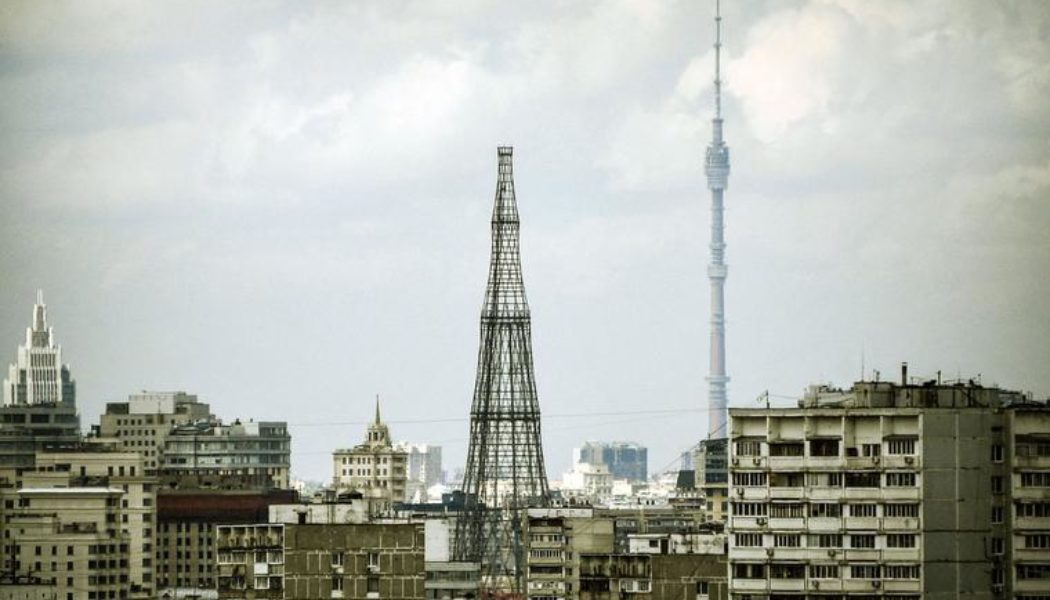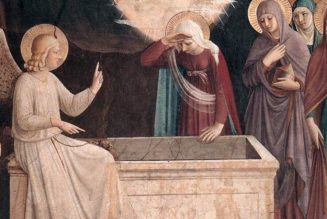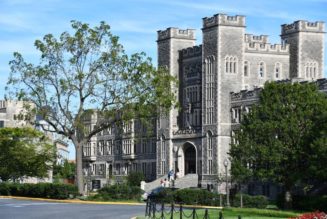
‘Come, let us make a city and a tower, the top whereof may reach to heaven, and let us make our name famous …’ (Genesis 11:4)
The American poet Ezra Pound declared 1922 “Year Zero.”
In the spring issue of that year’s avant-garde American literary journal Little Review, Pound, whose mantra was “Make It New,” published a calendar for this dawning epoch.
The months of the year were renamed after pagan deities, both Greek and Roman. More surprisingly, though, this new “Year Zero” had the letters “p.s.U” added to it. These letters stood for “post scriptum Ulysses,” or “after the writing of Ulysses.” This referred to the February 1922 publication in Paris of James Joyce’s novel Ulysses. In renaming of the divisions of time, turning the clock to zero, and conflating this with the birth of literary modernism, Pound was indicating the type of world that was to come.
There were others who shared this desire to commence a “Year Zero,” to destroy the existing order, and who were equally single-minded in their resolve.
In 1917, in the space of just nine months, Russia suffered two revolutions. By February 1917, the Russian monarchy had collapsed; in October, the Bolsheviks, led by Vladimir Lenin, had seized power, leading to a bloody civil war. Conservative estimates put the death toll of this revolution and subsequent civil war at 7 million; others estimate that there may have been as many as 13 million lives lost. By December 1922, the creation of the Union of Soviet Socialist Republics was declared. Thereafter, for seven decades, Communism was the official political ideology in the newly established Soviet Union.
In the midst of the Great Influenza epidemic, on July 30, 1919, Lenin signed a decree of the Council of Workers’ and Peasants’ Defense. The decree demanded “in an extremely urgent manner a radio station equipped with the most advanced and powerful devices and machines.”
The 240 tons of metal required for its construction was allocated from the stocks of the military department by Lenin’s personal decree. Only a few miles from the Kremlin in Moscow, the center of Soviet power, work on the radio mast began under the Russian engineer Vladimir Shukhov. On Feb. 28, 1922, the 160-meter (525-foot) radio tower was completed. It would be known as the Shukhov Tower.
The year 1919 had also marked the start of what would become known as the Soviet-Polish War. Lenin, Trotsky and others had determined that now was the time for a global Socialist revolution to commence. And so, Soviet tanks and troops rolled into Poland en route to Berlin, Paris and eventually, they hoped, the whole of Western Europe, bringing all under the “Red Star of Communism.”
On Aug. 15, 1920, this plan came to a shuddering halt. Polish forces, until then unable to repel the Soviet Red Army, finally rallied and repulsed the invader. That victory came to be known as the “Miracle of Vistula,” on account of what some claimed was the intervention of heavenly powers against the godless forces of the Soviets.
Lenin’s longed-for world revolution through military means was, for now at least, no longer viable. By 1922, therefore, that same revolution was to be pursued by means of modern communication, in particular by radio. From the start of the Russian Revolution of 1917, Lenin viewed radio broadcasting as one of the chief methods for the social control of the masses. It is not without significance that radio stations were targeted for destruction by Bolsheviks early on in 1917. Given the size of the emerging Soviet Union, the diversity of its nationalities and poor communication links, the significance of this new medium as a practical and effective way of communicating within this polity became clear. But Lenin’s vision for radio and grasp of its power as a propaganda tool was not limited to those already living in the nascent Soviet Union.
Invented at the end of the 19th century, the first radio broadcast took place in 1906, when an inventor from the General Electric Company (GEC) developed a device capable of transmitting the human voice over radio waves. The year 1922 was a significant year for radio: The first BBC radio broadcasts came from London; Radio Tour Eiffel in Paris also started transmitting weather bulletins; the first National Radio Conference was convened in Washington, D.C.; Warren Harding became the first U.S. president whose voice was heard live on radio, broadcasting a speech to the U.S. Chamber of Commerce. By the end of 1922, there were 670 commercial radio stations licensed in the United States. Reflecting the rise and the significance of this new medium, on March 10, 1922, Variety magazine’s front-page headline read: “Radio Sweeping Country — 1,000,000 Sets in Use.”
On the feast of St. Joseph, March 19, 1922, with broadcasting transmitters installed on top of the Shukhov Tower, radio broadcasting commenced from Russia. Transmitter power on the tower was 100 kW, giving any transmissions a range of 10,000 kilometers. The Shukhov Tower was more powerful than any radio station in Paris, Berlin or even New York City.
In the 1920s, radio receivers were expensive — at least for Soviet society — and therefore rare. Lenin saw radio broadcasts as a “paperless newspaper” and, consequently, an effective means of spreading communist propaganda among the still largely illiterate masses. He decreed loudspeakers be installed in places of public gathering to make the state’s “speaking newspaper” accessible to all. “Every village should have radio!” he said. “Every government office, as well as every club in our factories, should be aware that at a certain hour they will hear political news and major events of the day. This way our country will lead a life of highest political awareness, constantly knowing actions of the government and views of the people.”
Print media was still employed for anti-religious propaganda, however. Godless at the Machine was one such magazine. Published and distributed by the atheistic Soviet state, the magazine mocked Christianity with satirical images and articles. In the ninth issue of 1924, an article entitled “The Radio Tower” featured the recently constructed Shukhov Tower. On the page was an image of the avant-garde tower dwarfing the ancient Cathedral of Christ the Savior in Moscow — then the largest church building in Russia. The accompanying text describes the radio tower soaring ever upwards, while the image presented is of the tower gripping, vice-like, the cathedral below it, and, seemingly, by so doing, crushing any life out of it.
The Soviet authorities understood the power of radio. The All-Union Radio Station was launched by Lenin in November 1924. Its first regular broadcasts were produced in Moscow on the Comintern Radio Station, using the Shukhov Tower. The expansion of radio broadcasts in the Soviet Union was firmly under the control of the communist authorities.
As a result of extensive state funding, the Soviet Union became a world leader in the development of the new medium of radio throughout the 1920s. By 1925, for example, the world’s first shortwave radio station was operational from the Soviet capital. Radio Moscow, also known as Radio Moscow World Service, began its first foreign-language broadcast in German on Oct. 29, 1929; broadcasts in English and French soon followed. Reports came of Londoners clearly hearing Soviet propaganda, in English, via their radio sets. The world “revolution” was being pursued by every means possible.
In 1917, at Fatima in Portugal, three children — Lúcia dos Santos, 10 years old, and her cousins, 9-year-old Francisco and 7-year-old Jacinta Marto — had visions of the Blessed Virgin Mary. In one of those apparitions, on July 13, 1917, the children were granted a vision of hell, and Our Lady warned them of future wars unless “the consecration of Russia to my Immaculate Heart” took place. She went on, “If my requests are heeded, Russia will be converted, and there will be peace; if not, she will spread her errors throughout the world, causing wars and persecutions of the Church. … In the end, my Immaculate Heart will triumph. The Holy Father will consecrate Russia to me, and she will be converted, and a period of peace will be granted to the world.”
On Oct. 13, 1917, what has come to be known as the “Miracle of the Sun” took place. Some estimate as many as 70,000 gathered with the young visionaries that day when there seemed to be a solar suspension of movement, before the sun appeared rapidly to descend to the Earth. To the three children, there followed another apparition of the Holy Family. Lúcia was to write subsequently of this: “Our Lady, having disappeared in the immensity of the firmament, we saw, beside the sun, St. Joseph with the Child Jesus and Our Lady clothed in white with a blue mantle. St. Joseph and the Child Jesus seemed to bless the world with gestures which they made with their hands in the form of a cross.”
In October 1917, the Bolshevik Revolution was well underway in Russia. It proved to be a bloody one. The Black Book of Communism: Crimes Terror and Repression (1997) records how forces under Lenin killed hundreds of thousands of anti-Bolshevik workers and peasants and how tens of thousands died in Soviet labor camps. It was also under Lenin’s rule that a famine was engineered, which claimed 5 million lives. Later, with Stalin as leader, more than 690,000 individuals suspected of being political opponents were assassinated in the Great Purge; and, on his orders, 2 million peasants known as kulaks were also killed. It is reckoned that, in total, some 21 million people perished during the 74 years of the Soviet Union’s existence.
Today, the Soviet Union is no more. Officially, it ended on Dec. 8, 1991, the Solemnity of the Immaculate Conception of Mary, when it was announced that the Commonwealth of Independent States would replace the political entity once known as the Union of Soviet Socialist Republics. Two years later, in 1993, Radio Moscow ceased broadcasting.
Mirroring similar consecrations by Pope Pius XII (1952) and Pope St. John Paul II (1982 and again 1984), Pope Francis consecrated the world to the Immaculate Heart of Mary on Oct. 13, 2013, before the original statue of Our Lady of Fatima, which had been brought from Fatima to St. Peter’s Basilica in Rome.
In 2014, the Shukhov Tower, which had long fallen silent and ceased broadcasting communist propaganda, was facing demolition by the Russian State Committee for Television and Radio Broadcasting. The demolition was later stayed. Instead, it was proposed that the tower should be preserved as a monument — but as a memorial to what, has yet to be determined. To the ideology that erected the tower, there is, of course, already a legacy, namely, 21 million graves.
One hundred years after construction started on the Shukhov Tower, and in the midst of a global influenza pandemic, Pope Francis declared not a “Year Zero” but one dedicated to St. Joseph, which ran from Dec. 8, 2020, to Dec. 8, 2021.
The Protector of the Church with the Child in his arms was once more to bless the world.
Join Our Telegram Group : Salvation & Prosperity







